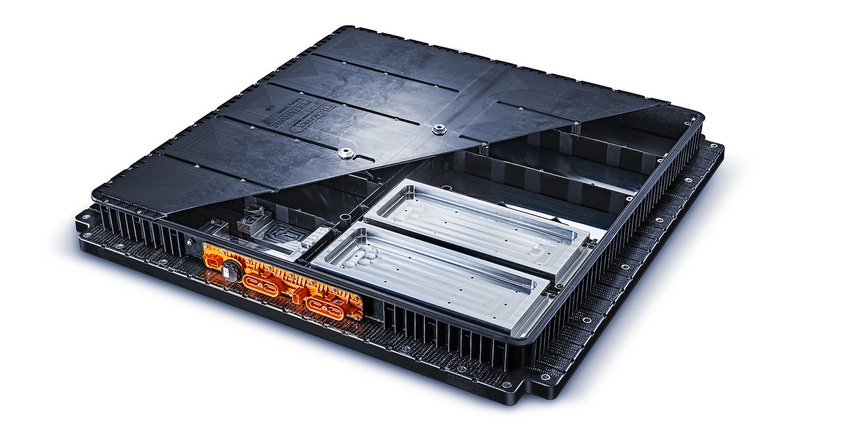Lanxess Goes Lightweight at International Motor Symposium
Large-format plastic enclosure for high-voltage EV batteries, tank liners for high-pressure hydrogen among highlighted technologies.
April 18, 2022

At this year’s International Vienna Motor Symposium (April 27 to 29), Lanxess will showcase several concepts and applications for climate-friendly drive technologies. “Our material development focuses on components for high-voltage batteries in electric powertrains and for the charging infrastructure of electromobility. We are also working on materials for fuel-cell technology and advanced driver-assistance systems,” said Julian Haspel, who heads the e-Powertrain team in the High Performance Materials (HPM) business unit of the specialty chemicals company.
Large plastic battery enclosure
One event highlight from Lanxess will be the large plastic enclosure for high-voltage batteries in electric vehicles. Developed in collaboration with Kautex Textron as a near-series technology demonstrator, Lanxess was responsible for the material and Kautex managed component and process development. The geometrically complex lightweight component is around 1.40 meters (4.5 feet) long and wide, does not contain any metallic reinforcing elements, and weighs somewhere in the mid two-figure kilogram range. It is manufactured in a single-stage compression molding process with a compound based on Durethan B24CMH2.0 polyamide 6 compound and does not require any further rework.
Crash-relevant areas are specially reinforced with inserts made from Tepex dynalite continuous-fiber-reinforced thermoplastic composite. As demonstrated in simulations, the component geometry fulfills a range of important standard loading cases such as for eigen frequency or “crush behavior,” whereby the resistance of a battery housing to slow deformation loading is tested. “The most important real-life component tests will be completed by the time the International Vienna Motor Symposium opens, which means that we can discuss the results with visitors to our booth,” said Haspel.
Permanently clamped battery
Tepex is also suited for constructing lightweight load-bearing carriers for EV batteries. One good example of this is a curved holder for a battery that provides a backup supply of electricity to the highly automated Intelligent Drive assistance system in the Mercedes-Benz S-Class in the event of a power failure. This electrically insulating and corrosion-resistant composite part is around 40% lighter than its metal equivalent. Due to its production using the hybrid molding process, numerous functions such as holders and fastening elements can be integrated directly in the component, which helps to cut costs. “Our composite does not suffer creep under high permanent stresses, which is why the holder can keep the battery in place by clamping alone,” said Haspel.
Polyamide for high-pressure hydrogen tanks
Lanxess has expanded its material development expertise to include high-pressure tanks for storing hydrogen. “We successfully transferred our know-how in the area of series-produced tank liners for natural-gas-powered cars to high-pressure tanks for fuel-cell technology,” said Haspel. With Durethan BC550Z DUSXBL, Lanxess can offer a polyamide 6 compound that, compared with other plastics, acts as an effective barrier against hydrogen and offers outstanding low-temperature toughness. The material shows extremely strong pinch-off seams in extrusion blow molding. Thanks to the high melt stiffness of the compound, even 2-meter-long (6.5-ft) truck-tank liners can be blow-molded. When welding injection-molded tank halves, the compound forms joining seams with high strength. Lanxess will be showcasing a prototype liner at the International Vienna Motor Symposium.
Switchover during series production
One example of how Lanxess has successfully substituted polyamide 66 with polyamide 6 can be seen in the cylinder head covers for a passenger car made by a Chinese automotive manufacturer. The switchover was implemented during ongoing series production. “The Durethan BKV35H2.0 component fulfills all the most important tests and is extremely stable in response to heat, engine oil, and blow-by gases. Not only that, but compared with the former material, it is also low-warpage and exhibits superior surface properties,” said Haspel.
You May Also Like


